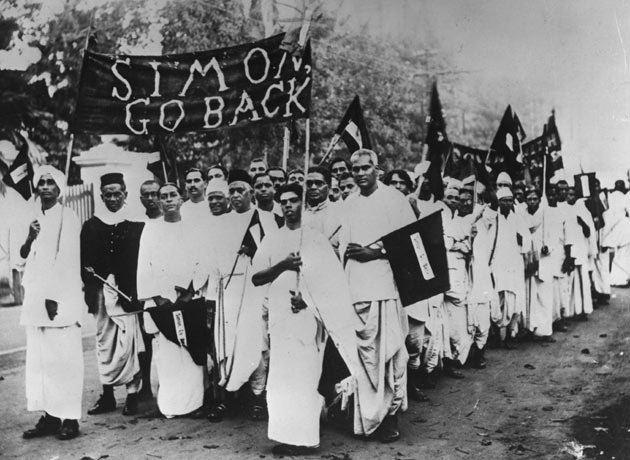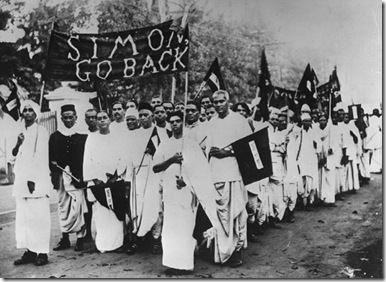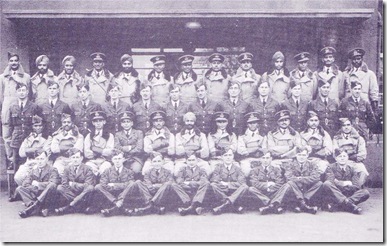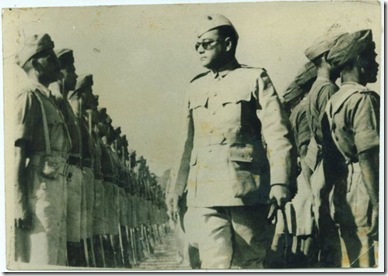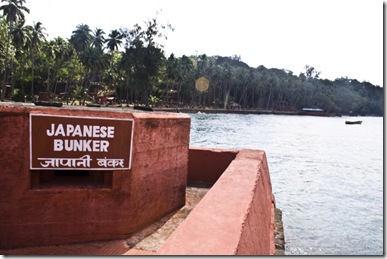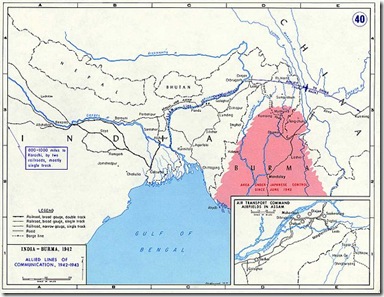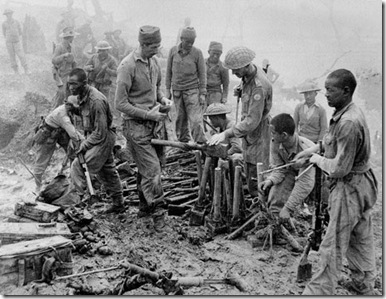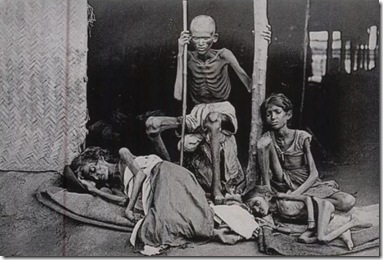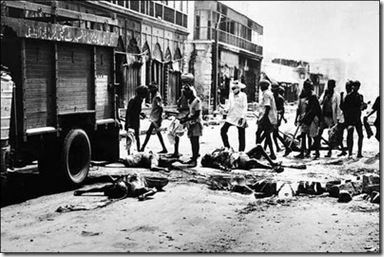War is hell. World War II’s direct impact and its repercussions still lay imprinted on the face of earth. Countries still fear to go on war for fear of triggering another World War. India’s role and loss during World War II though huge has always been underplayed. This article will cover 10 positive and negative effects World War II had on India. Top 10 Ways World War II Affected India
Quit India Campaign
It became clear following Japan’s attack on Pearl Harbor that India was the next target of Japanese forces. To avoid India’s support to Axis forces, Stafford Cripps was sent to India to negotiate a deal with Congress for India’s full cooperation during the war. He offered full Dominion status with right to leave the Empire and Commonwealth when the war was over. This was the first time, British hinted at giving India independence on agreement. Cripps also suggested that any province not wishing to join India could become an independent country. Congress and Nehru rejected this proposal and demanded a full cabinet government with integration of all Indian provinces into one nation. On rejection of these demands, Gandhi with the support of Congress led a non-violent ‘Quit India’ campaign. When this movement was growing out of control, British actively suppressed the movement with over 1,00,000 arrests and dissolution of Congress. From 1942 to 1944, there was no congress. It was one of the largest movements led for Indian independence.
Expansion of Indian Army
Before World War II broke out, British Indian army numbered just around 2,20,000 native troops. Over the course of the war, it expanded 10 folds with creation of further naval and air force units. Most of the cost of the Indian Army was paid by London, essentially erasing India’s national debt. By the end of war, there was a surplus of £1,300 million. There were also various industrial units set up rapidly to keep up with the demand of munitions for the Indian troops (uniforms, rifles, machine-guns, field artillery, and ammunition). Several Indian industries saw phenomenal development during war, i.e., textiles (up 16%), steel (up 18%), chemicals (up 30%). Small warships were built and an aircraft factory was established in Bangalore (now known as Hindustan Aeronautics Limited). This is what laid the foundation for the Indian Army that exists today.
Largest Volunteered Army
By the end of World War II Royal Indian Army became the largest volunteering army in the history with over 25,00,000 men serving in infantry, airforce and naval regiments over Africa, Asia and Europe. The losses incurred by Indian Army from WW2 was loss of 36,000 Indian servicemen, 34,354 wounded and 67,340 became prisoners of war. Even around 11,500women were enlisted in 1942 to serve anywhere in India. Valor of Indian Army was recognized and around 4,000 were awarded with decorations and 38 members were awarded Victoria Cross or George Cross.
Rise of Azad Hind Fauj (Indian National Army)
Indian National Army was an armed military unit constituted by Indian nationalists in 1942 to oust British rule from India. It shortly collapsed the same year, but it was later revived and strengthened under the new leadership of Subhas Chandra Bose in 1943. At its height, INA consisted of 43,000 recruits. It is recognized as India’s first national army. The primary motto of INA was Indian Independence. Majority of its recruits consisted of prisoners of war from British Indian Army captured by Japanese in Singapore. They enlisted primarily due to resentment towards British negligence toward their troops. INA always remained controversial until its collapse due to its allegiance with axis powers and use of guerrilla tactics. Subhas Chandra Bose convinced Hitler to support the cause of Indian Independence to which he agreed. Interestingly, prior to this, Hitler viewed Indian freedom fighters as being racially inferior “Asiatic jugglers.” He saw Indians as inferior race and that Indians deserved to be ruled by a superior race. Experts believe Hitler agreed with the view of having his own private Indian army deep in India fighting against the Allies.
After the end of the war, captured INA soldiers were put on trial on charges of treason with death penalties. Controversy also exists in some records indicating mistreatment of ex-INA soldiers by post-independence government of India.
Japanese Occupation of Andaman
After the fall of British Colony of Rangoon to Japanese Imperial Army, British knew it was impossible to defend Andaman. Therefore British withdrew the last regiment of Gurkha soldiers from the islands. With no resistance, Japanese Army occupied Port Blair on March 23, 1942. The Port Blair garrison consisted of 300 Sikh militia, who were later enrolled in Indian National Army. Some unpublished accounts by British officers shed some light into the atrocities committed by the Japanese Army on the local inhabitants from 1942-45. Hundreds of locals were brutally tortured and killed on the suspicion of being spies while thousands of civilians were tortured and murdered for no specific reason. Indigenous population of some smaller islands was wiped out. In 1945, between 250-700 people were forcefully deported on boats to an uninhabited island to grow food. A rescue mission sent to save them after Japanese occupation found only 12 survivors and the beach was littered with skeletons.
Infrastructure development in North East
Prior to WW2, Northeast India was ruled as part of Bengal province and did not see much development under British rule. In the initial stages of war, Japanese forces had captured Rangoon and threatened to advance further into Indian Territory. India being the most precious British colony, British concentrated much its manpower in India to defend Indian northeast frontier from Japanese invasion. Capture of Rangoon started taxing on Allied forces due to denial of transportation of essential supplies to the western Allies and Chinese. To overcome this, British government undertook huge efforts to improve railroad and transportation infrastructure development in North East. The railway system, with 700,000 employees, was taxed to the limit as demand for transportation soared. More than 1100 miles of railroad was laid by 1944.
Even to the present day, Indian government has done little to improve the infrastructure (rail, road and air strips) of North Eastern states. The main reason behind this nondevelopment is attributed to deny Chinese forces to easily advance into Indian Territory in times of war.
Battle of Imphal and Kohima
The battles of Imphal and Kohima were one of the most decisive battles of WW2. In fact, British considered it one of the greatest battles fought by British Army. Battle of Kohima broke out on April 3, 1944 when 15000 men of Japanese army with the assistance of Bose’s INA attacked a British garrison against just 1500 men. Outnumbered 1:10, British forces stood their ground and defended for nearly two weeks before reinforcements arrived. The battle continued longer than Japanese had expected. Running low on food supplies and incurring heavy losses from British reinforcements, they had to retreat back. The battle of Imphal was fought on an even larger scale than Kohima. It waged for about five months and heavy losses were incurred on both sides, but Japanese incurred 2.5 times more losses than the allies. The defeat at Kohima and Imphal was the largest defeat in Japanese history. The huge losses the Japanese suffered in the Battles of Imphal and Kohima crippled their defence of Burma. For Japan, the loss of South Asia marked the end of its era of aggression and the end of its imperialist ambitions.
Bengal Famine of 1943
Bengal famine of 1943 was one of the worst famines of India. Little do people know that it was a manmade famine. People all over the world despise Hitler for the holocaust that killed around 5-6 million Jews, but no one actually talks about a manmade famine brought about by Winston Churchill that killed around 4 million Indians. In 1943, bad harvests were a nationwide thing due to WW2. Bengal’s main source of food (Burma) fell to the hands of Japanese and therefore food stocks started running low. The other provincial governments in the West denied any food supply to Bengal. This with the added effect of diversion of food stocks in Bengal to British soldiers and England, made the situation even worse.
Winston Churchill, when asked about the Bengali famine, said “If things are so bad, then why hasn’t that Gandhi starved yet?” and that “The Indian people brought this upon themselves by breeding like rabbits.” Also the famine in Bengal was done on purpose by Churchill to stop the invading Japanese and deny their army of any food.
Indian Independence
After WW2 ended, it had taken an immense toll on the British Empire. Britain had lost a lot of money due to WW2 and they were looking to their colonies to help them get their money back, but Gandhi at this time organized Indians against the British. This did two things, once it showed the world the hypocrisy of the British and made people think of the British as bad, but because of things like the Salt March and Gandhi telling Indians not to buy British goods, India went from being a country that was profitable for the British to a country that was a loss and cost them money, so they had to cut in order to prevent themselves from losing more money.
WW2 broke out to contain Hitler’s intention of having German colonies beyond its borders with intention of colonial occupation that Britain had already been practicing for centuries. After WW2, people all over the world started supporting voices against British occupation over its colonies. When Labour Party came to government in 1945 in Britain it inclined towards internationalism and racial equality, among other liberal principles. Soon after coming into power, Prime Minister, Clement Attlee (Labour Party) began the process of dismantling the British Empire granting India its independence in 1947.
Violent Indo-Pak Partition
After WW2 ended, it became taxing for Britain to maintain a colony as big as India. In February of 1947, the British government announced that India would be granted independence by June 1948. Louis Mountbatten pleaded with the Hindu and Muslim leadership to agree to form a united country, but only Gandhi agreed with his view. Congress agreed with Jinnah’s view of a separate Muslim state in the Muslim dominated parts of western India (now Pakistan) and East Bengal. As India slowly progressed towards independence, tensions grew between Hindus and Muslims along the lines of proposed Muslim state of Pakistan. The sparse British officers and soldiers left in India found it hard to contain the regular clashes between Hindu and Muslim groups.
Fearing the security of British citizens in India, on July 15, 1947 Mountbatten advanced the date of transfer of power to August 15, 1947 (2nd anniversary of Japan’s surrender in WW2). With just one month left for Independence, Cyril Radcliffe, was given just a few weeks’ time to demarcate a clear boundary between India and Pakistan. The lines were drawn in haste with little to no thought given on religions majority and minorities on either sides of the lines. By hisown admission, Radcliffe was heavily influenced by his lack of fitness for the Indian climate and his eagerness to depart India. What ensued was one of the largest population movements in recorded history. At the lowest estimate, half a million people perished and twelve million became homeless in the violent migration across the Indian border.
What are your views on how WW2 affected India? Do you agree with these views?

















